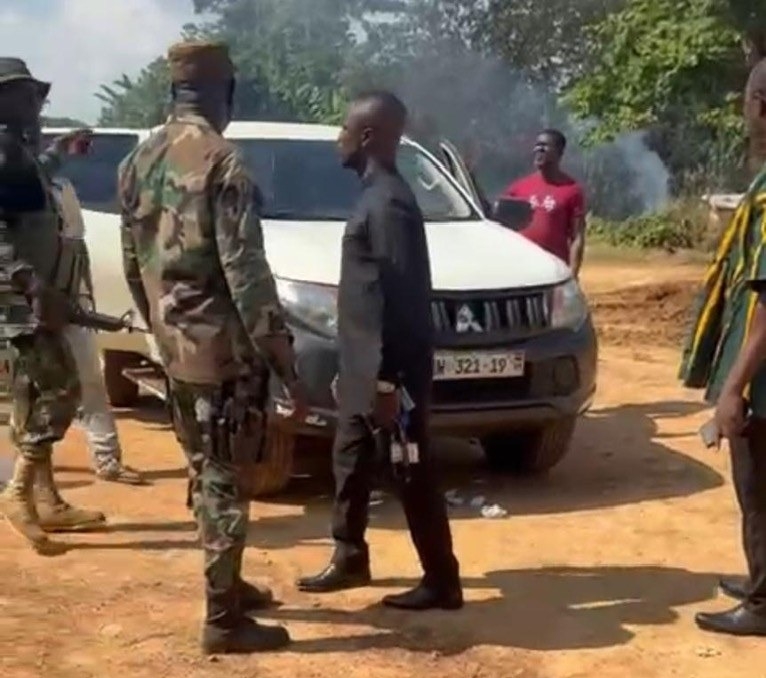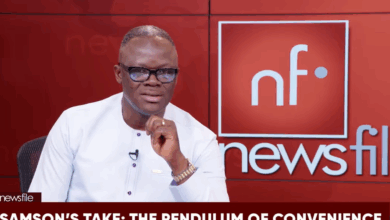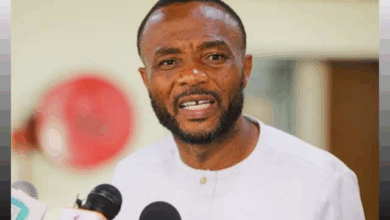NAIMOS attack, failing galamsey fight and Ghana’s limping national security – Kabah Atawoge writes


The images and video clips that emerged after the attack on the National Anti-Illegal Mining Operations Secretariat (NAIMOS) team in the Ahafo Region were hard to watch.
They showed not only frightened security personnel — including NAIMOS’s Director of Operations, Colonel Dominic Buah — but a larger, more worrying picture, hundreds of young people willing to confront state agents to protect illegal mining operations, and a national security architecture that appears ill-prepared to respond.
What happened on Saturday, November 1 is now the latest flashpoint in a streak of violent confrontations between anti-galamsey teams and illegal miners across Ghana.
But beyond the immediate shock, the episode exposes systemic weaknesses including fragile law enforcement coordination, politicised interference, gaps in community relations, and allegations of complicity that have allowed illegal gold mining to mutate from an environmental and economic problem into an increasingly violent security challenge.
According to the account of the NAIMOS team, the operation began as a routine response. While travelling along the Goaso–Hwidiem road, Colonel Buah’s team spotted an excavator digging along the roadside at Bronikrom. The team moved in, apprehended several people who were actively mining, and ordered them to refill the pits to limit further environmental damage.
The situation rapidly escalated when the suspects were asked to call the owner of the site. The first person to arrive identified himself as a Defence Intelligence representative from the Ahafo Region. NAIMOS reportedly recovered from the apprehended group a loaded pistol (Smith & Wesson), two pistol magazines, 21 rounds of 9mm ammunition, 12 mobile phones, a black side bag, a power bank, a Lexus ignition key and GH¢11,000 in cash.
Things deteriorated further when the MP for Asutifi North Ebenezer, Kwaku Addo, reportedly arrived at the scene accompanied by a group thugs. He allegedly stated he had been sent by Collins Dauda, MP for Asutifi South and demanded the immediate release of the detained suspects — including a Burkinabe national — and that their handcuffs be removed.
One would have thought once the team was successfully evacuated to the Hwidiem Police Station, the situation will calm but a group of over 600 youth surrounded the police station and demanded the release of the suspects.
While the Bronikrom episode has captured national attention, it is not unique. A string of confrontations over recent years shows the trend is widening, both geographically and in intensity.
In June 2025 an anti-galamsey task force was attacked at Akomfere in the Atwima Mponua district (Ashanti Region). Allegations emerged that local police had permitted third-party thugs to interfere with arrests involving Chinese nationals.
In 2023, violence erupted at the Anyinam police station after the Ghana National Association of Small-Scale Miners (GNASSM) arrested two illegal miners.
More recently, on 13 August 2025, clashes at Bonteso in the Amansie South district of the Ashanti Region between illegal miners and law enforcement resulted in multiple arrests.
These incidents share common features, rapid mobilisation of miners and supporters, the appearance of armed individuals at mining sites, complicating claims of political patronage, and a recurring narrative that law enforcement is either outnumbered, under-resourced, or occasionally complicit.
The Bronikrom attack exposes several structural failures.
Weak operational coordination and protection
Anti-galamsey teams operate in a complex space that overlaps environmental enforcement, local policing, military support and intelligence. When enforcement teams encounter resistance on the ground, they require rapid and reliable backup — police reinforcements, tactical support, secure communications, medical evacuation — and a chain of command that is clear and respected. When that coordination breaks down, enforcement teams are put at disproportionate risk.
Politicisation and interference
The alleged involvement of elected officials — or the appearance that politicians may intervene on behalf of suspected illegal miners — undermines public confidence in impartial law enforcement. Whether the MP’s arrival was intended to mediate, to de-escalate, or to influence, the optics and the reported demand for immediate release fuel suspicions that illegal mining enjoys political protection in some quarters. That perception emboldens operators and discourages frontline officers from rigorous action.
Intelligence gaps and corruption risks
Weapons, large cash sums, and sophisticated logistics indicate organised networks. Tackling them requires actionable intelligence — on financiers, transport routes, supply chains, and end markets — not merely on where shovels and excavators are operating. Corruption allegations — from reports of police or other officials being paid off to accommodate operations — further degrade the intelligence picture by blinding investigators and allowing networks to adapt.
Community alienation
A recurring dynamic in these clashes is the participation of local youth. Many communities living near illegal mining operations see them as livelihood sources. Enforcement that doesn’t pair arrests with credible economic or social alternatives risks inflaming local tensions. When communities believe enforcement threatens their immediate survival, they mobilise — sometimes violently — to defend access to income, even if that income is illegal and unsustainable.
Legal and prosecutorial friction
Even when arrests are made, weak judicial follow-through — delayed prosecutions, light sentences, bail loopholes — reduce deterrence. The long chain of custody from arrest to conviction is where many anti-galamsey efforts falter. If arresting officers expect suspects to be back on the streets quickly, they will approach operations more cautiously.
Lawful recommendations
- Immediate independent inquiry and parliamentary oversight
Parliament should urgently investigate the Bronikrom incident — specifically examining allegations of political interference and the identity of those who arrived at the scene, most especially, the Asutifi North MP. Transparent hearings will help rebuild public trust and clarify whether any elected officials abused their position.
- Strengthen operational coordination and protection
Create standing, multi-agency rapid-response units for high-risk anti-galamsey operations that include NAIMOS officers, special police units, and military support under clear, lawful rules of engagement. Ensure teams have medical evacuation plans and secure communications.
- Improve intelligence and financial investigations
Shift focus from isolated site raids to targeting financiers, logistics, and corrupt officials. Financial intelligence units, anti-corruption agencies and specialised prosecutors should be tasked with following money trails, seizures, and asset forfeiture to choke the networks that fund illegal mining.
- Enforce accountability for public officials
Establish clear, swift sanctions for any public official found to be facilitating illegal mining — from suspension to criminal prosecution. Political patronage is the single most corrosive force allowing galamsey to flourish; removing it is essential.
- Judicial and prosecutorial reform
Fast-track prosecutions in landmark galamsey cases. Create dedicated environmental courts or specialised dockets with prosecutors trained in environmental law and organised crime to ensure arrests lead to sustained convictions.
- Community-centred interventions
Pair enforcement with alternative livelihood programmes: formalise small-scale mining where feasible, provide training and microfinance options for agricultural restoration, and invest in local infrastructure. Use community liaison officers to build trust before, during and after operations.
- Transparent equipment and personnel audits
Audit security forces deployed for anti-galamsey activities to ensure personnel are properly vetted, trained, and free from conflicts of interest. Publicise results to reduce perceptions of impunity.
Conclusion
Ghana’s struggle against illegal mining is no longer only an environmental battle: it is a test of state capacity, governance, and the rule of law. The Bronikrom attack — with its weapons, cash, and the involvement of local power brokers — shows how deeply embedded and well-resourced these networks can be.
If Ghana is to reclaim its rivers and forests — and the safety of its frontline officers — policymakers must act decisively, transparently and within the law. The Bronikrom episode should be the catalyst for that comprehensive response, not an occasion to surrender principle for expediency.
DISCLAIMER: The Views, Comments, Opinions, Contributions and Statements made by Readers and Contributors on this platform do not necessarily represent the views or policy of Multimedia Group Limited.
DISCLAIMER: The Views, Comments, Opinions, Contributions and Statements made by Readers and Contributors on this platform do not necessarily represent the views or policy of Multimedia Group Limited.
Source link





